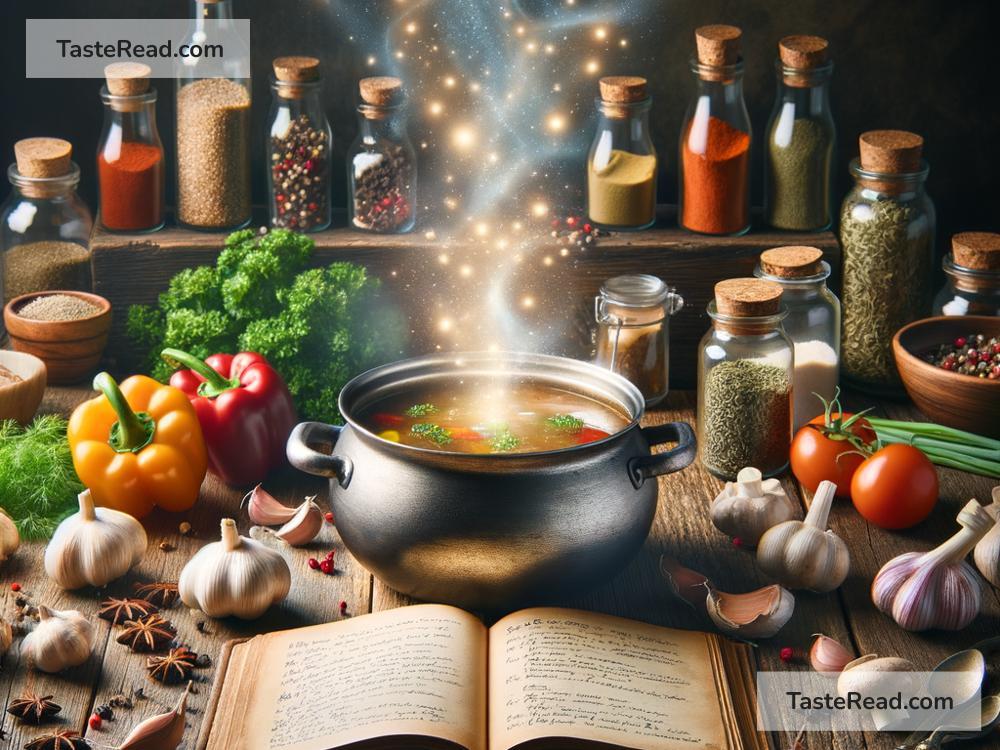The Legend of the Soup That Changes Flavors With Mood
Imagine a bowl of soup that knows how you feel. A soup that doesn’t just fill your stomach but connects to your heart, changing its flavor based on your emotions. Sounds magical, doesn’t it? This enchanting idea is at the heart of a mysterious tale passed down through generations. The story takes us to a small village nestled in the green valleys, where people whispered about the “Mood Soup” — a dish that could taste happy, sad, or anything in between.
The Origin of the Magical Soup
The legend begins long, long ago. In the village, there lived a kind old woman named Mira, who was known as the best cook anyone had ever met. Her recipes were loved by everyone, but one dish stood out: her soup. People said it was no ordinary soup. No matter who ate it, the soup would taste different. Some said it was salty when they were upset, sweet when they were joyful, or tangy when they were excited. No one could explain why.
According to the legend, Mira had created the soup with a secret ingredient: a rare root from a mysterious tree deep in the forest. The tree was said to grow only where the moon’s light touched the ground on certain nights. Mira found the tree one evening while searching for herbs, and she felt an intense connection to it. As she dug up one of its tiny roots, she heard a soft whisper in the air. Some say it was the voice of the forest itself, blessing her with the ability to cook food that would “feel” emotions. Mira decided to blend this root into her soup recipe, unknowingly creating the Mood Soup.
What Made The Soup Special?
Here’s where things became even more mystical. The villagers began noticing that the soup didn’t just reflect their emotions; sometimes, it helped them feel better. For example:
– If someone was overwhelmed with sadness, the soup would turn sweet and comforting, making them smile again.
– If someone was angry or stressed, the soup would quietly shift its flavor to something mild and soothing, helping them calm down.
– On days when people felt happy, the soup matched their joy with its bright, exciting flavors.
The villagers started calling Mira’s soup “magic.” It wasn’t just food — it was something more. A bowl of Mood Soup seemed to understand people in a way other humans couldn’t.
The Soup’s Effect on the Village
Because of the soup’s powers, Mira’s small house became the center of the village. People would come not only to eat but also to reflect on their feelings. The soup brought people together, helping them open up about their struggles and celebrate their joys. Friends shared laughter over its sweet taste, and strangers bonded as they discussed the tangy kick it sometimes had when eaten in excitement.
The villagers noticed something amazing: people could understand each other better after eating the soup. The simple act of noticing how the soup changed flavors taught them a lot about emotions. They started communicating more openly, supporting each other, and building strong relationships.
As Mira grew older, she passed down her secret recipe to her granddaughter. She told her, “The mood of the soup comes from the mood of the cook. When you prepare it, think about sharing love and kindness. That’s how you’ll keep the magic alive.” From that day on, Mira’s granddaughter carried on the tradition of making the soup, using the special root from the magical moonlit tree.
What Can We Learn From This Magical Tale?
Though the Mood Soup is just a legend, its message is something we can carry into our daily lives. Food has always been about more than just eating — it’s about the love and care that goes into making it. When someone prepares food with genuine warmth, it can bring comfort and joy to those who eat it.
The story of the Mood Soup also reminds us of the importance of understanding emotions, both our own and others’. Sometimes, people don’t need advice or solutions. All they need is someone who understands how they feel. Just like the magical soup, showing empathy can help heal hearts and bring people closer.
Finally, the legend emphasizes the magic of connection. Food has a special way of bringing people together. From family dinners to celebrations with friends, sharing food can build stronger relationships and create lasting memories. Maybe the mood of the soup wasn’t magic at all — maybe it was just the magic of love and care.
Does The Magic Soup Exist?
Nobody knows for sure if Mira’s Mood Soup ever truly existed or if it was a story meant to teach a lesson. Some say it’s hidden somewhere in the forests waiting for someone brave enough to find the moonlit tree. Others say the recipe lives on in certain quiet villages, made by cooks who understand the secret of cooking with feelings.
What’s clear is that the legend of the Mood Soup captures our imagination. It makes us wonder: what would a bowl of soup taste like right now, based on how we’re feeling? Maybe we all have a little magic in us — the ability to cook or share things that make others feel good. So, the next time you make a meal for someone, think about Mira’s kindness. Who knows? Maybe your food will bring a little “mood magic” into their lives too.
And that’s the beauty of this heartwarming legend — even if it’s just a tale, it inspires us to believe in the magic of emotions, connection, and love. So, is the Mood Soup real? Perhaps it is, and perhaps the real magic lies inside us all.


